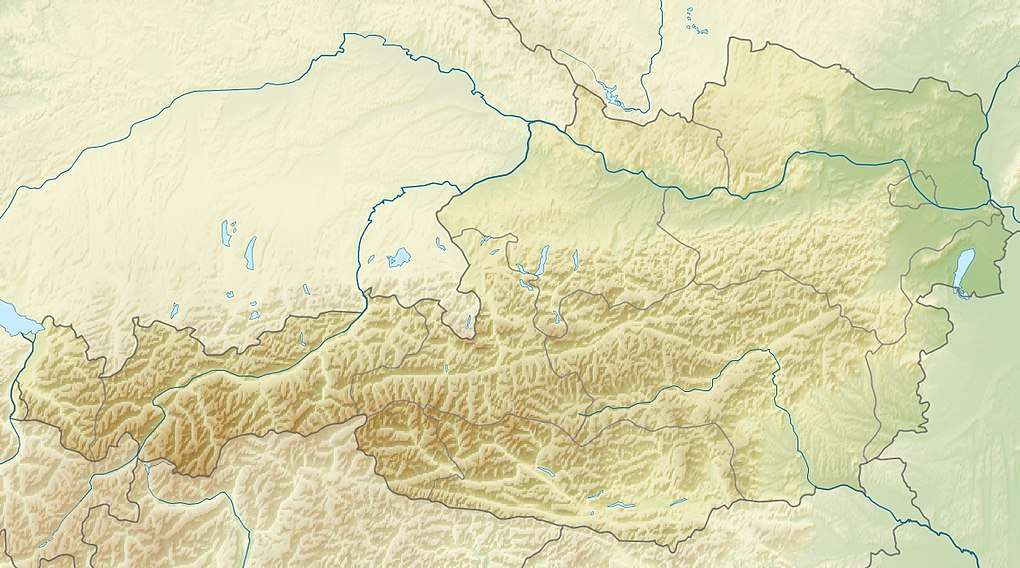Gudenus cave
The Gudenus cave (German: Gudenushöhle) is an archaeological site near the city of Krems in north-eastern Austria. It is noted for its fossils and remains of Palaeolithic human settlers.
Gudenushöhle | |
Gudenus cave interior | |
 Location in Austria | |
| Location | near Lichtenau im Waldviertel |
|---|---|
| Region | Lower Austria |
| Coordinates | 48°26′50″N 15°23′45″E |
| History | |
| Periods | Paleolithic |
Description
The Gudenus cavern is situated 20 km (12 mi) northwest of the city of Krems, in the valley of the Little Krems, not far from Willendorf, in Lower Austria.[1] The site is close to the River Danube.[2] The cave is 22 m (72 ft) long with a width of 2 to 3 m (6.6 to 9.8 ft) and is situated 7.5 m (25 ft) above the level of the stream.[1]
Paleontology
The archaeological deposit has yielded bones of numerous animals, including Woolly mammoth, Woolly rhinoceros, Aurochs, Chamois, Reindeer, and Red deer.[1] Human artifacts include numerous flint implements beginning with the Mousterian (i.e. Neanderthals) of the Middle Paleolithic, although there is no certainty as to the dating.[2] There is also an Upper Palaeolithic, Magdalenian, assemblage including an engraved reindeer bone,[3] and a fragment of a bone flute dated to about 16,000–10,000 BCE.[4]
References
- Obermaler, Hugues (1907). "Quaternary Human remains in Central Europe". Annual Report of the Board of Regents of the Smithsonian Institution for the year ending June 30 1906. Smithsonian Institution.
- Ciochon, Russell L.; Fleagle, John G. (1993). The Human Evolution Source Book. Prentice Hall. p. 507.
- Oliva, Martin (2005). Palaeolithic and Mesolithic Moravia. Moravian Museum. p. 103.
- Pilch, John J. (2011). Flights of the Soul. Wm. B. Eerdmans Publishing. p. 95. ISBN 0802865402.
External links
![]()